Managing SQL Server data can sometimes feel like juggling too many balls at once. Growing volumes, mismatched parts, and tricky transformations can quickly pile up. ETL tools act as an extra set of hands, providing data migration, cleanup, and synchronization.
In this article, we’ve rounded up the best ETL tools that simplify working with SQL Server. We will dive into their strengths to see how they solve common business problems.
Table of contents
- What is Microsoft SQL Server?
- What are the Features and Benefits of Microsoft SQL Server?
- What is the ETL Process for SQL Server?
- Native ETL Tools in SQL Server
- Top ETL SQL Server Tools (Free and Paid)
- Real-World Use Cases for SQL Server ETL Tools
- Comparison Table of Top SQL Server ETL Tools
- How to Choose the Right ETL Tool for Your SQL Server Environment
- Conclusion
What is Microsoft SQL Server?
Microsoft SQL Server is a relational database management system (RDBMS). Since 1989, it has provided companies with a framework for organizing, maintaining, and updating large databases, also granting users access to information through apps. SQL Server runs on Windows, Linux, and Docker containers on-premises and in the cloud through Azure SQL Database or other cloud platforms.
SQL Server is a relational database that arranges data into structured tables with rows and columns. Tools and applications use the Transact-SQL (T-SQL) language to exchange data with an SQL Server instance or database. This enables advanced operations like joins, aggregations, and indexing, making it simple to manipulate and query data.
Statista ranks Microsoft SQL Server among the top three most widely used DBMS globally as of June 2024. SQL Server is essential when handling transactional and analytical workloads, such as e-commerce platforms, healthcare systems, or business intelligence (BI) systems.
What are the Features and Benefits of Microsoft SQL Server?
Microsoft SQL Server is a strong data management and business intelligence foundation with its performance, scalability, and integration options.
- Database management. It provides a powerful platform for storing, retrieving, and managing data. With tools like SQL Server Management Studio (SSMS), users can keep track of performance, run queries, and fine-tune their databases.
- Scalability. Due to its scalable architecture, SQL Server can handle increasing amounts of data and support multiple users while maintaining performance. Engineering research confirms that the results outperform those in scale-in and scale-out scenarios.
- Security. SQL Server provides security across multiple layers, including platform and network, principals and database objects, and application security. It offers such capabilities as Transparent Data Encryption (TDE) for encrypting data, secure communication via SSL/TLS, auditing, and role-based access control.
- Performance. With an In-Memory OLTP engine, SQL Server supports fast transaction processing and improves performance for critical applications.
- Cross-Platform Integration. SQL Server fits into the Microsoft ecosystem and works seamlessly across platforms like Linux and Docker containers. It also integrates with popular tools and frameworks like Python, R, and Azure cloud services.
Major SQL Server components

What is the ETL Process for SQL Server?
To gain meaningful insights, businesses must combine information from SQL Server and other systems into one clear picture. However, integrating multiple sources can be challenging. That’s where the Extract, Transform, Load (ETL) process comes in, helping to make it all work. It extracts data from various sources, transforms it into a usable format, and loads it into a target system, such as a data warehouse, enabling further analysis.
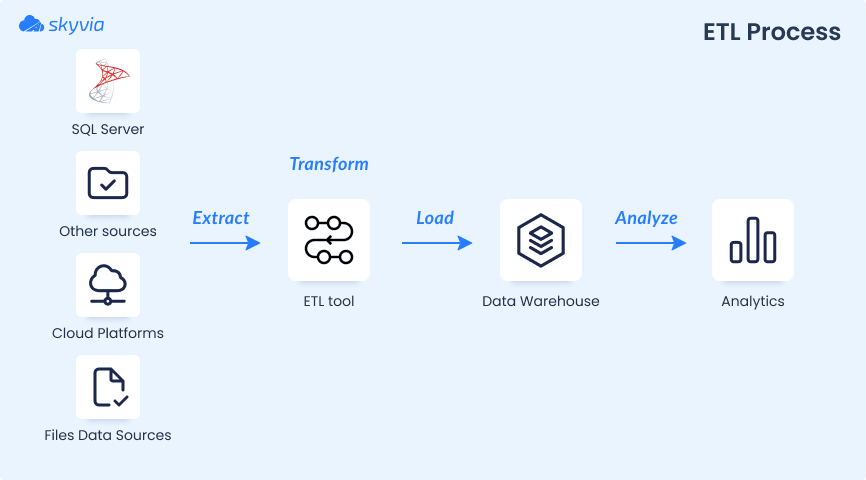
SQL Server provides built-in tools for managing ETL processes and can interact with external third-party tools to expand its capabilities.
Benefits of SQL Server ETL
- Increased Accuracy and Consistency of Data. Automated ETL procedures guarantee that data is error-free, clean, and validated.
- Faster Data Processing. By transforming and loading data for analysis more quickly, businesses can obtain timely insights for operational efficiency.
- Improved Integration. Integrating an SQL Server with a data warehouse allows you to consolidate information from relational databases, cloud services, and external sources, providing a unified view for deeper insights.
- Task Automation. Automating repetitive tasks such as formatting, merging, and data validation reduces manual errors and saves time.
Native ETL Tools in SQL Server
Built-in SQL Microsoft ETL tools can be reliable solutions for basic integration needs. However, third-party solutions may be needed for more advanced scenarios.
SQL Server Management Studio
SQL Server Management Studio (SSMS) is a free integrated development environment (IDE) for managing SQL Server infrastructure. And it comes with a simple import and export tool – the SQL Server Import and Export Wizard. This wizard tool is a simple way to copy data from a source to a destination that works with major database platforms and flat files. Here are some use cases:
- Import customer names from Excel to SQL Server.
- Export to MySQL database from Oracle invoice table.
- Import a CSV of client information to the PostgreSQL client table.
However, the downside is you can only add or remove columns for simple, no-code import/export.
SQL Server Integration Services
Using SQL Server Integration Services (SSIS) is another common way to do the SQL Server ETL process. It can manage more complex transformations and automate procedures while supporting a variety of sources. And unlike a wizard in SSMS, a graphical designer is available here.
We’ll explore SSIS in more detail in the Top ETL SQL Server tools section below.
What are the downsides of built-in ETL SQL Server tools?
While SQL Server offers options for ETL processes, using them alone might not cover every need. Here are some common challenges:
- Manual effort: building and maintaining complex pipelines often requires extensive custom coding, which can be time-consuming.
- Problems with quality: keeping data accurate and consistent across large datasets can be challenging without automated checks. Writing custom code makes this even trickier because it’s easy to overlook errors in a large codebase.
- Performance limitations: performance may be impacted while managing large, varied datasets. Running multiple SSIS packages in parallel can be challenging due to high memory usage, which often conflicts with SQL Server. Proper CPU allocation is also critical; without careful distribution, SQL Server may dominate resources, causing SSIS to run much slower.
- Steep learning curve: SSIS may be challenging to learn, particularly for handling advanced transformations.
To overcome these difficulties, businesses turn to third-party ETL tools. These tools provide ready-made connectors for easy integration with hybrid and legacy systems, cloud apps, popular CRM, ERP, marketing, and e-commerce platforms. They also integrate with other databases and data warehouses, automating data extraction, transformation, and loading processes.
Top ETL SQL Server Tools (Free and Paid)
In this section, we’ll explore some of the most popular ETL tools on the market, highlighting their advantages and drawbacks to help you choose the right one for your business needs. Each of the listed tools is great in its own way. They all include basic features for ETL tools like a pipeline designer, scheduler, and execution logs. They also use well-established security methods to protect data. And finally, they have a community or technical documentation to support users.
Skyvia
G2: 4.8/5 (based on 242 reviews)
Capterra: 4.8/5 (based on 87 reviews)
Skyvia is an all-in-one cloud data platform that offers no-code solutions for integration, connectivity, automation, and cloud backup. It supports a wide range of cloud applications, databases, file storage services, and cloud data warehouses. Skyvia’s Data Integration product combines ETL, ELT, and reverse ETL functionality.
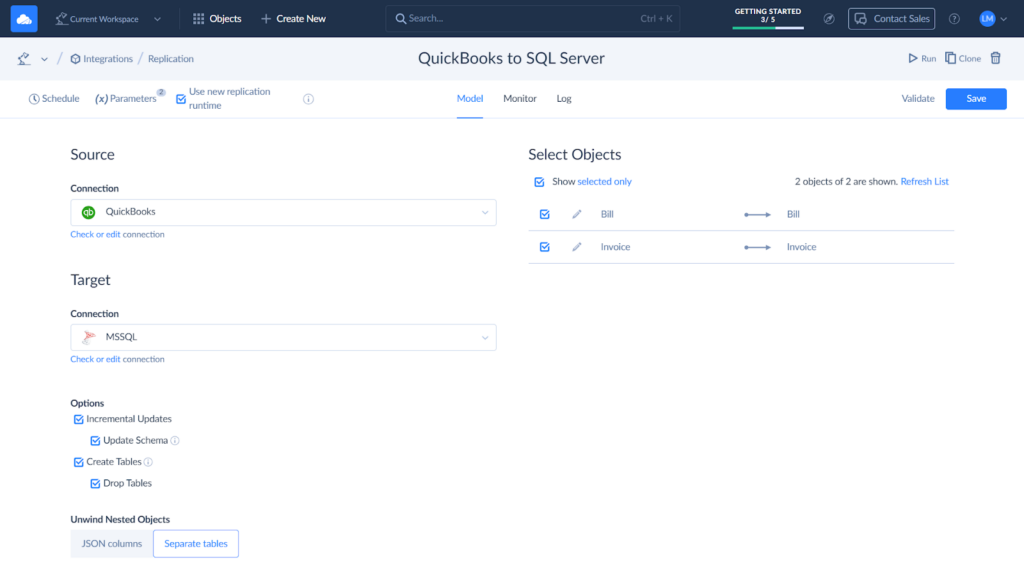
Skyvia makes it easy to integrate several databases or cloud applications supporting replication and bi-directional data sync. It also can handle complex data pipelines with multistage transformations. With batch processing, error logging, and cloud-specific features, Skyvia guarantees effective loading and optimizes data extraction. It also offers event-based automation to streamline tasks, workflows, and processes.
PROS
- 200+ pre-made connectors for integration, including SQL Server.
- Ready-to-use API endpoints for any data source.
- Freemium and trials provided.
- It is easy to use with a simple user interface with in-app integration tips.
- Monitoring and detailed logs.
- Complex data transformations.
- Scheduled automated runs.
- Failure email notifications.
- No-code and low-code querying of data sources.
- Quick and save cloud backup.
CONS
- There are limits to free usage.
- More video tutorials are needed.
PRICING
- Free 10k records per month (new or changed).
- The basic plan starts at $79/month for 5M records.
- Flexible pricing plan policy.
BEST FOR
Businesses of all sizes and data teams seeking no-code, cloud-based ETL solutions to sync and integrate SaaS apps, databases, cloud platforms, as well as hybrid and legacy systems.
Microsoft SQL Server Integration Services (SSIS)
As we mentioned, SQL Server Integration Services (SSIS) is a native tool of the Microsoft SQL Server ecosystem. SSIS, which was created to manage various data migration and transformation operations, is particularly good at ETL procedures. It also goes above by automating regular database maintenance and controlling updates to complex data models. The best part is that the SQL Server license includes SSIS ETL capabilities for free.
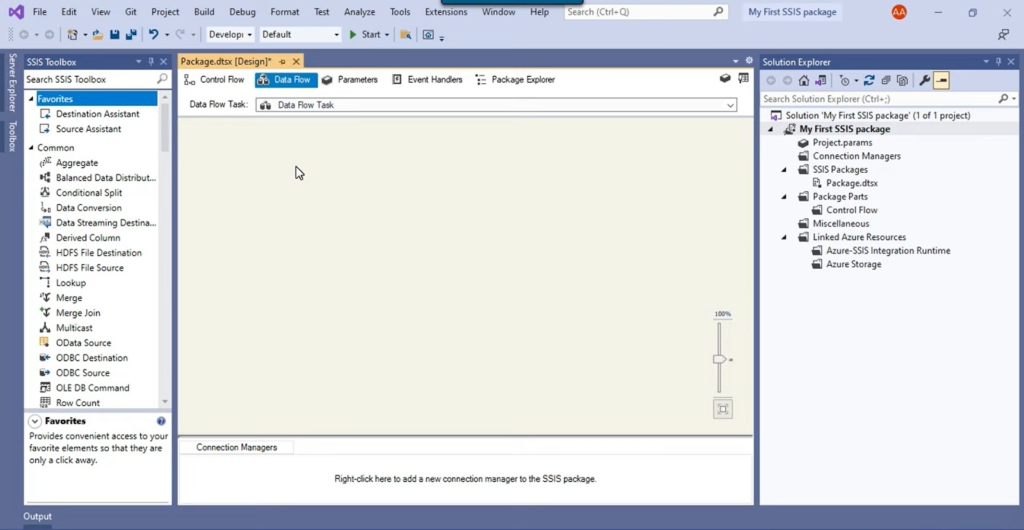
PROS
- ODBC, OLEDB, and ADO.Net data sources.
- Microsoft-built free components for source, destination, and transformation.
- Third-party vendors produce free and paid SSIS ETL components.
- No-code transformation using formulas and components.
- More flexible transformation using C# or Visual Basic.
- A parameterized package that allows invoking from an external app.
- Easy deployment through Visual Studio.
- Drag-and-drop ETL design of data flow and control flow.
- Supports incremental loading.
- Uses SQL or Windows authentication and SQL Server certificates.
- A large community of developers is ready to support you.
- A lot of articles, forums, and video tutorials exist.
CONS
- Schema changes require high technical expertise and developer intervention, making it costly and inefficient.
- Ingesting large and complex data sources can be challenging.
PRICING
- Bundled with SQL Server, so it’s free.
- Third-party components may come with additional costs.
BEST FOR
Mid-sized to large enterprises requiring on-premises ETL capabilities integrated with Microsoft SQL Server for data migration and automation.
Fivetran
G2: 4.2/5 (based on 406 reviews)
Capterra: 4.8/5 (based on 23 reviews)
Fivetran, a cloud-based data integration platform, is good for real-time analytics, database replication, AI processes, and cloud migrations. It automates extraction, transformation, and loading of data into SQL Server or data warehouses and guarantees smooth data pipelines.
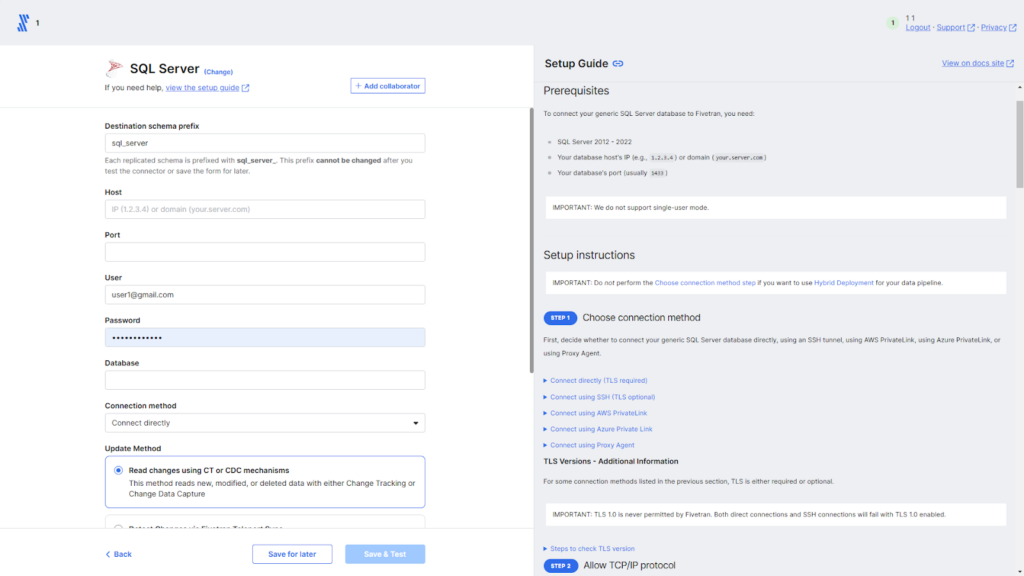
PROS
- No-code setup for seamless integration.
- Automatic schema mapping.
- Real-time data synchronization for up-to-date insights.
- Scalable architecture to handle growing SQL Server data needs.
- Cloud compatibility with both on-premises and cloud-based SQL Servers.
- Secure data movement with encryption and industry compliance.
- 500+ connectors supported.
CONS
- May be too expensive for large volumes.
- The complexity of transformations can be challenging.
PRICING
- A pay-as-you-go pricing model based on Monthly Active Rows (MAR).
- A freemium model for up to 500000 Monthly Active Rows.
- Pricing details are not publicly available.
BEST FOR
Businesses prioritizing automated, real-time integration with moderate engineering effort, particularly for cloud-native analytics and replication needs.
Informatica PowerCenter
G2: 4.4/5 (based on 85 reviews)
Capterra: 4.5/5 (based on 42 reviews)
PowerCenter belongs to Informatica’s product family to quickly build and run intelligent ETL. It is a powerful platform for integrating data into SQL Server, with extensive connectors for both on-premises and cloud sources.
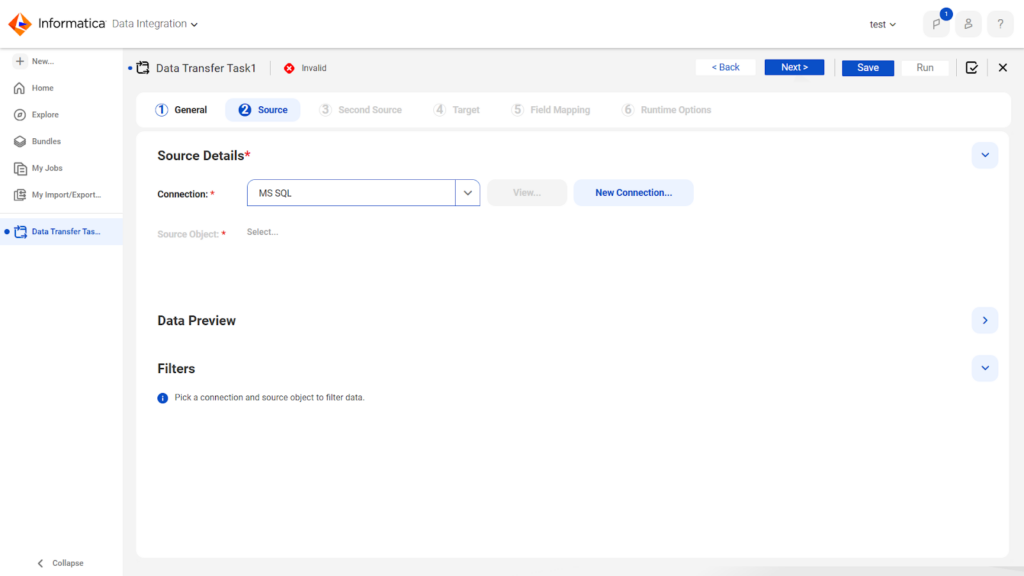
PROS
- 90+ connectors, including major databases.
- Build formulas for data transformation instead of coding.
- Drag-and-drop designer and configuration with keyboard shortcuts.
- Uses parallel processing to handle huge amounts of information.
- Granular access privileges and flexible permission management for security.
- 24/7 support is available.
- Includes self-paced online training.
CONS
- May be challenging to read the logs.
- First-time users need to familiarize themselves with terminologies.
- Some user reviews in G2 report the app being stuck and unresponsive.
PRICING
- Informatica pricing is based on Informatica Processing Units (IPU), which lets you pay for selected products and services based on the subscription model.
- Contact a sales representative for detailed pricing information.
BEST FOR
Large enterprises handling complex data transformations, extensive workflows, and high-volume ETL in a hybrid or on-premises environment.
Pentaho (Kettle)
G2: 4.3/5 (based on 15 reviews)
Capterra: 4.3/5 (based on 46 reviews)
Pentaho Data Integration (PDI) is another ETL tool for SQL Server. PDI was known as Kettle before Hitachi Vantara acquired it. It simplifies the process of capturing, cleansing, and storing data consistently. It is a powerful but easy tool to design pipelines using drag-and-drop.
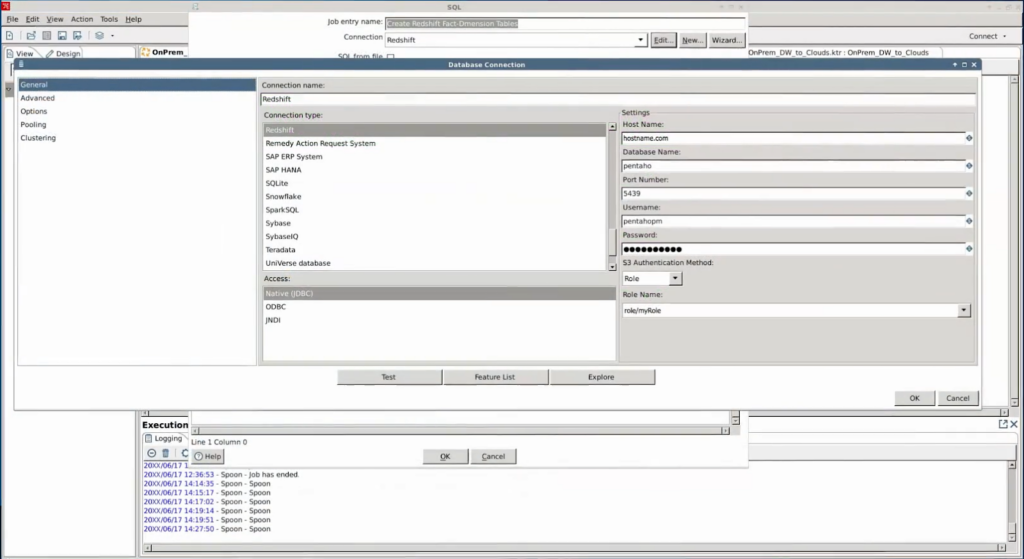
PROS
- Codeless pipeline development.
- Streaming data support.
- Expanded library of connectors.
- Enterprise-scale load balancing and scheduling.
- Supports machine learning models with R, Python, Scala, and Weka.
- Uses Pentaho security or advanced security providers.
- 24/7 availability with an assigned architect and mentoring for paid subscriptions.
CONS
- More complex installation and setup process compared to other ETL tools.
- Expensive, according to some reviews in Gartner Peer Insights.
- No built-in masking for sensitive data, but a scripting transformation is possible.
PRICING
- Free Pentaho Community Project is available to try the codeless data pipeline.
- 30-day free trial of Pentaho Enterprise Edition.
- Flexible pricing plans that can be adjusted as your needs grow.
BEST FOR
Mid-sized to large businesses needing flexible open-source ETL and analytics solutions that integrate well with diverse data sources and big ecosystems.
IBM InfoSphere DataStage
G2: 4.0/5 (based on 69 reviews)
TrustRadius: 8.0/10 (based on 38 reviews)
IBM InfoSphere DataStage is a graphical framework for developing ETL jobs. It is a part of the IBM InfoSphere Information Server.
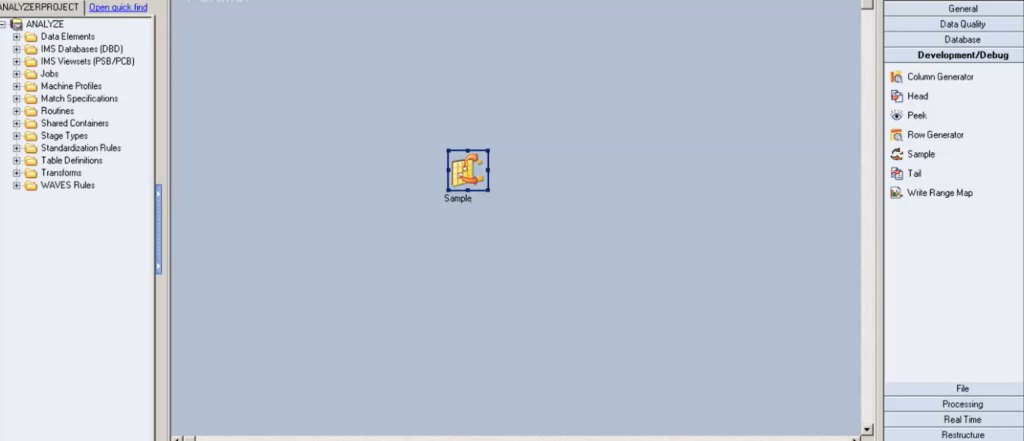
PROS
- 40+ connectors are supported on a parallel engine.
- Structured and unstructured data processing.
- Expressions to transform data.
- Visual creation of integration jobs.
- High performance and scalability for bulk and real-time processing.
- Supports masking of sensitive data.
CONS
- Expensive, based on some G2 user reviews.
- The desktop app is heavy and requires higher desktop specs.
- No video tutorials for the latest version.
PRICING
- Charges are based on Capacity Unit-Hours used for job runs. See the pricing page for more details.
- Price varies by country.
- Free for 15 Capacity Unit-Hours per month, with deletion after 30 days of inactivity.
BEST FOR
Companies focusing on enterprise-grade data integration, governance, and scalable ETL for advanced analytics and regulatory compliance.
Oracle GoldenGate
G2: 3.9/5 (based on 34 reviews)
TrustRadius: 8.5/10 (based on 221 reviews)
GoldenGate is Oracle’s go-to tool for database replication, designed to support online migrations. It works with Oracle, non-Oracle, and open-source databases both on-premises and cloud.
Oracle GoldenGate offers real-time data integration, transactional replication, and data comparison across heterogeneous systems. Users can operate it through a command-line interface, GoldenGate Studio, or a browser-based graphical interface for OCI GoldenGate.
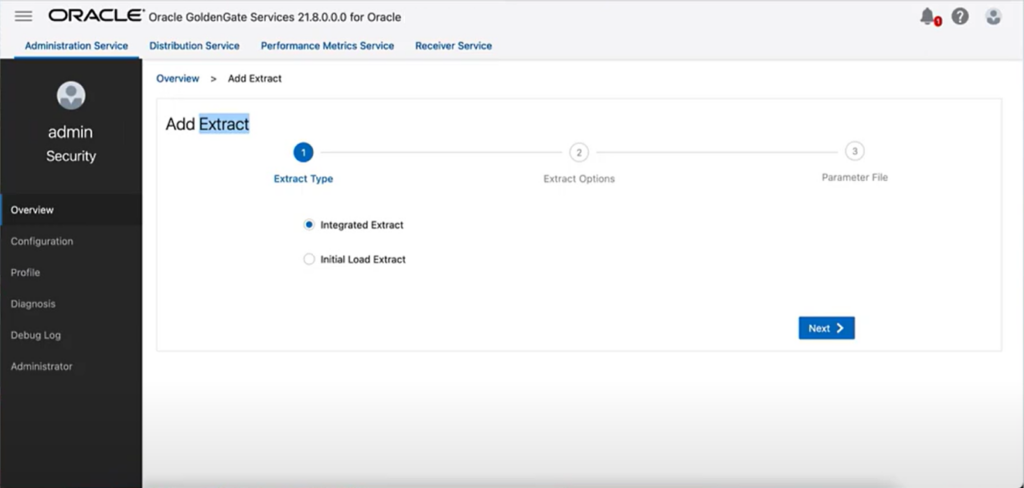
PROS
- Database replication for SQL and NoSQL.
- Availability on Oracle Cloud Infrastructure (OCI) as a cloud service.
- Automated monitoring with real-time alerts.
- High availability and scalability. Scaling can also be automatic regardless of workload.
- Enterprise-grade security with master encryption keys and secure network protocols.
CONS
- Complex configuration and setup.
- Limited capabilities: supports only replication scenarios, while other tools offer advanced ETL and integration options.
- Pricey.
PRICING
- The price depends on the use of OCI GoldenGate.
- Check Oracle Integration Pricing for cloud options.
- GoldenGate uses Named User Plus or Processor Licensing for non-Oracle databases like SQL Server.
- Contact Oracle Sales to understand licensing options and find the best one.
BEST FOR
Mid-size and enterprise organizations requiring high-performance data replication and real-time synchronization across heterogeneous systems and cloud platforms.
Qlik Replicate
G2: 4.3/5 (based on 109 reviews)
TrustRadius: 8.4/10 (based on 48 reviews)
Qlik Replicate is a data replication, ingestion, and streaming tool. It moves data quickly yet securely and accepts major databases and data warehouses. This applies whether on-premise or in the cloud.
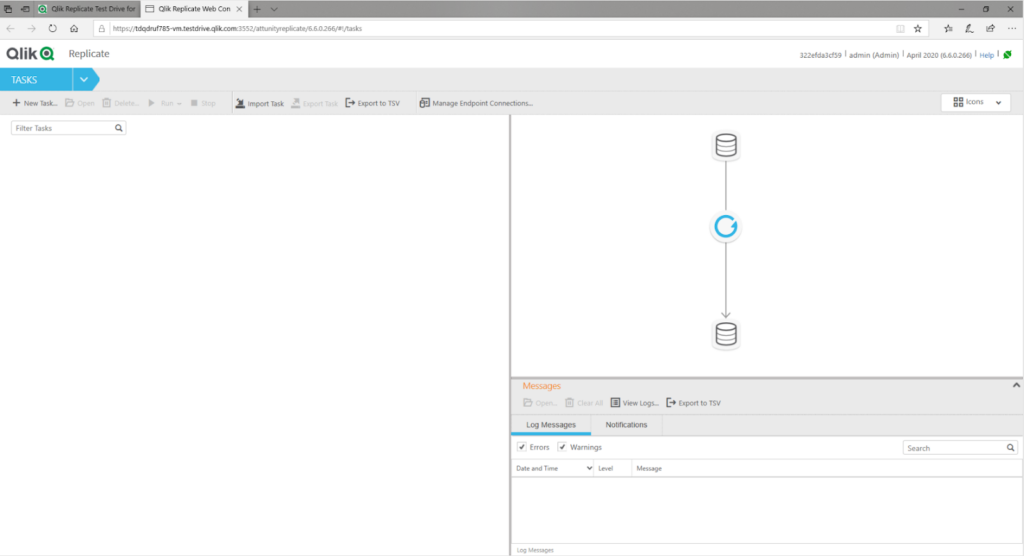
PROS
- Simple but powerful data ingestion from many sources to SQL Server.
- Automatically generate target schemas based on metadata.
- Uses parallel threading to ensure low latency.
- Global and table-specific transformation rules using an expression builder or a wizard.
- An intuitive user interface to move data from source to target.
- A beautiful runtime dashboard to see the status of the process.
- Uses industry-standard security for authenticating and encrypting communications.
- Data masking is possible through a hash column value.
CONS
- Customer support and tool stability need to improve, according to G2 reviews.
- Missing transformations that are available from other ETL tools, though you can create user-defined transformations in C language.
- Advanced use cases may require development efforts.
PRICING
- Free test drive of a pre-configured environment in the cloud.
- Prices are not disclosed. You need to contact sales.
BEST FOR
Teams needing real-time data replication and distribution for analytics and business intelligence platforms.
Hevo Data
G2: 4.4/5 (based on 254 reviews)
Capterra: 4.7/5 (based on 103 reviews)
Hevo is an easy-to-use no-code data pipeline platform. Hevo enables data replication from SQL Servers hosted on-premises or in the Azure cloud and is compatible with 2008 and later versions.

PROS
- 150+ connectors where 60+ are free.
- Transforming column data involves coding through Python.
- Allows testing of your ETL pipeline for a single row before deployment.
- Easy-to-use forms with schema mapper and keyboard shortcuts.
- Scales horizontally to process huge amounts of data.
- Uses fault-tolerant architecture and data masking.
CONS
- You can’t register using personal email addresses (Gmail, Outlook) and .edu addresses.
- Requires knowing Python to do transformations.
- The SQL Server connector is not free.
- No drag-and-drop designer for pipelines.
PRICING
- A free pricing plan includes up to 1 million events and a limited list of connectors.
- Paid subscription starts at $239/month for 5 million events.
- For more details, check out Hevo’s pricing details.
BEST FOR
Startups and mid-sized businesses needing no-code, automated pipelines.
Apache Nifi
G2: 4.2/5 (based on 24 reviews)
Capterra: 4.0/5 (based on 3 reviews)
Apache Nifi is another open-source ETL solution that aims to process and distribute data. Its no-code, browser-based user interface makes it possible to extract data to and from SQL Server.
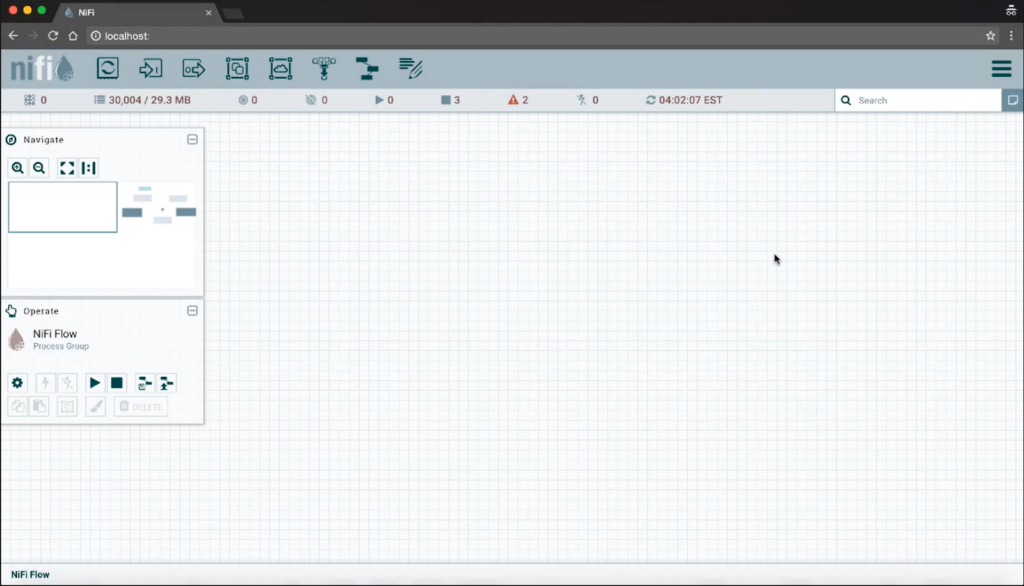
PROS
- Drag-and-drop designer.
- Low code for basic transformations.
- Templates for the most used data flow.
- Quick execution of large jobs with multithreading.
- Reduce even more processing time with data splitting.
- Supports masking of personal and sensitive data.
- Support for encrypted communication.
- Has Nifi chat using Slack and IRC for support.
CONS
- The user community is small but growing.
- Steep learning curve.
- Requires technical knowledge for custom connections or complex data transformations.
- Limited built-in transformations.
PRICING
- Free under open-source Apache License 2.0
BEST FOR
Medium to enterprise organizations that handle large amounts of data and require integration across multiple systems.
Real-World Use Cases for SQL Server ETL Tools
Let’s explore real-world business problems and discover how Skyvia helps companies solve them.
Example 1: Migrating On-Premises SQL Server Data to Cloud
A business needs to move its infrastructure to the cloud. Skyvia simplifies the process by providing schema mapping, data transformation, and transfer. Post-migration, the company can rely on Skyvia to seamlessly work with both on-premises and cloud sources.
Example 2: Synchronizing SQL Server with SaaS Platforms
A company needs to integrate SQL Server with SaaS platforms like Salesforce or HubSpot. By automating this synchronization, Skyvia enables real-time updates between the SaaS and SQL Server platforms. This helps businesses make better decisions and improve client experience.
- Salesforce and SQL Server Integration Tutorial with Skyvia
- Integrate HubSpot with SQL Database or Data Warehouse using Skyvia
- Echo Technology Solutions case study
Example 3: Consolidating Data for Reporting and Analytics
An organization uses Skyvia to collect data from multiple sources, clean it, and consolidate it into SQL Server. This centralized repository enables teams to generate actionable insights through dashboards and reports. The company minimizes manual effort and accelerates its analytics workflows by automating the ETL process.
Comparison Table of Top SQL Server ETL Tools
Here’s a side-by-side comparison of the top SQL Server ETL tools to help you find the best fit for your business needs.
| Tool | Cloud/On-Premises | Ease of Use | Focus | Pricing Model |
|---|---|---|---|---|
| Skyvia | Cloud-Based | No-Code | Data ingestion, ELT, ETL, reverse ETL, data sync, workflow automation | Subscription-based, Freemium is available |
| SSIS | On-Premises | Developer-Focused | ETL, ELT, and Reverse ETL | Included with SQL Server License |
| Fivetran | Cloud-Based | No-Code | Data ingestion, ELT | Subscription-based with consumption pricing |
| Informatica PowerCenter | Hybrid | Low-Code | Data Ingestion, ETL | License-based |
| Pentaho | Hybrid | Developer-Focused | ETL, streaming data | Subscription-based, Freemium is available |
| IBM InfoSphere | Hybrid | Low-Code/Developer-Focused | ETL, data integration, data governance | License-based |
| Oracle GoldenGate | Hybrid | Developer-Focused | Real-time replication, change data capture (CDC), and data synchronization | License-based and subscription for OCI |
| Qlik Replicate | Hybrid | Low-Code | ETL, ELT, data ingestion | Subscription-based |
| Hevo Data | Cloud-Based | No-Code | Data Ingestion, ETL, Reverse ETL | Subscription-based |
| Apache Nifi | On-Premises | Developer-Focused | ETL, ELT | Free (Open-Source) |
How to Choose the Right ETL Tool for Your SQL Server Environment
When choosing the right ETL tool for your SQL Server integrations, consider the following factors:
- What is your team’s technical expertise? Do you need an easy, no-code tool like Skyvia or Hevo, or are you comfortable using developer-focused tools like SSIS?
- What is the scale of your project? Are you working with a small business setup, or do you need to support enterprise-level data processing?
- What budget do you have for an ETL solution?
- Does the ETL tool need to integrate with other software or platforms in your current tech stack?
Conclusion
With growing data sources and volumes, manual collection is impractical, even for startups. For businesses relying on Microsoft SQL Server, automation through ETL tools is not a trend but a necessity. By automating workflows, they can minimize human errors, optimize resources, enhance data security, and handle sensitive information.
In this article, we have considered the best ETL SQL Server tools, both paid and free. Cloud tools such as Skyvia tick all the boxes for essential features required in organizations for their data integration purposes.
The best way to choose the right tool is to try it yourself. Skyvia offers a trial to see how simple and useful it can be.
The best ETL tool for SQL Server depends on your needs. For no-code/low-code solutions, Skyvia, Hevo, Fivetran, and Qlik Replicate are great options. Developer-focused tools like SSIS, Pentaho, or Oracle GoldenGate offer advanced control for more complex projects.
Yes, SQL Server includes SQL Server Integration Services (SSIS), a powerful ETL tool for data migration, transformation, and workflow automation. It comes free with a SQL Server license.
You can manually create a data pipeline, which requires significant development effort. Alternatively, ETL tools like SSIS, Skyvia, or Fivetran simplify the process by offering features such as replication, schema mapping, and seamless integration with both cloud and on-premises platforms.


